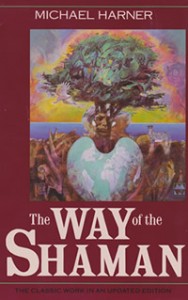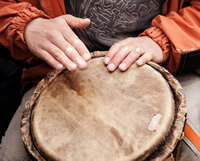The Way of the Shaman Part 1
 Michael Harner is the founder and director of the Foundation for Shamanic Studies in Mill Valley, California. He is an atheistic anthropologist and a practicing Shaman. In 1980 he wrote a book entitled, “The Way of the Shaman”, which is considered to be a classic work on what shamanism is, where it came from, and how you can participate in it.
Michael Harner is the founder and director of the Foundation for Shamanic Studies in Mill Valley, California. He is an atheistic anthropologist and a practicing Shaman. In 1980 he wrote a book entitled, “The Way of the Shaman”, which is considered to be a classic work on what shamanism is, where it came from, and how you can participate in it.
What is a Shaman?
A Shaman is essentially a “medicine man” for the tribe. Someone who can communicate with the “spirits” in nature to perform healings on the sick or provide advice. Mr Harner studied various tribes and cultures across the globe and discovered that Shamans in these tribes performed similar rituals even if the tribes were separated by an ocean and never heard of one another. In addition Shamans in different tribes communicate with the same spiritual entities.
Mr Harner writes that Shamans are said to have “a two-way spiritual communication that resurrects the lost connections our human ancestors had with the awesome spiritual power and beauty of our garden Earth.” Shamans are the “last humans able to talk with the animals.” They are “the last ones able to talk with all of Nature, including the plants, the streams, the air, and the rocks.”
There are different ways a Shaman can reach an altered state of consciousness where communication with the  spiritual realm can occur, such as using drums to produce monotonous percussion sounds or simply using visualization where the Shaman uses his imagination to enter in an altered state. The Shaman “imagines” himself going into a hole in the ground or a cave and within a few minutes the scene in their minds starts taking on a life of its own with sounds, smells and sights beyond normal experience. They begin to fly through landscapes and encounter “power animals” that communicate with the Shaman.
spiritual realm can occur, such as using drums to produce monotonous percussion sounds or simply using visualization where the Shaman uses his imagination to enter in an altered state. The Shaman “imagines” himself going into a hole in the ground or a cave and within a few minutes the scene in their minds starts taking on a life of its own with sounds, smells and sights beyond normal experience. They begin to fly through landscapes and encounter “power animals” that communicate with the Shaman.
Shamanism in America?
He also points out America is using shamanism through the holistic approach to health. “The burgeoning field of holistic medicine shows a tremendous amount of experimentation involving the reinvention of many techniques long practiced in shamanism, such as visualization, altered states of consciousness, aspects of psychoanalysis, hypnotherapy, meditation, positive attitude, stress-reduction, and mental and emotional expression of personal will for health and healing. In a sense, shamanism is being reinvented in the west preciously because its needed...The shaman may work all night, or several nights, for the recovery of a single patient, involving himself and the patient in a dyadic alliance that intertwines the unconscious of both in a heroic partnership against disease and death. But the alliance is more, for it is an alliance with the hidden powers of Nature, unseen in daylight where the material impingements of daily life clutter.” (page 136)
For example, the author writes of cancer doctors who, unknowingly, use methods of shamanism as part of their chemotherapy. “Patients relax in a quiet room and visualize themselves on a walking journey until they meet an ‘inner guide,’ which is a person or an animal. The patient then asks the ‘guide’ for help in getting well. This resemblance to the shamanic journey, the recovery of a power animal, and its shamanic use is as obvious as it is remarkable.” page 137
Where does the “power” for healing come from?
Mr Harner writes “Shamans have long believed their powers were the powers of the animals, of the plants, of the sun, of the basic energies of the universe.” (page 57) “Through his guardian spirit or power animal, the shaman connects with the power of the animal world, the mammals, birds, fish, and other beings. The shaman has to have a particular guardian in order to do his work, and his guardian helps him in certain ways. The guardian spirit is sometimes referred to by native North Americans as the power animal…This is a particularly apt term, for it emphasizes the power-giving aspect of the guardian spirit as well as the frequency with which it is perceived as an animal. But the Coast of Salish also sometimes refer to the guardian spirit as the Indian, for it can appear to them in human form as well.” Page 58
Sometimes the guardians actually speak to the shaman as they do among the Lakota Sioux tribes. One of them recounts what a guardian said to him…”I heard the cry of an eagle, loud above the voices of many other birds. It seemed to say, ‘We have been waiting for you. We knew you would come. Now you are here. Your trail leads from here…you will have a ghost with you always — another self.’ Page 59







Comments